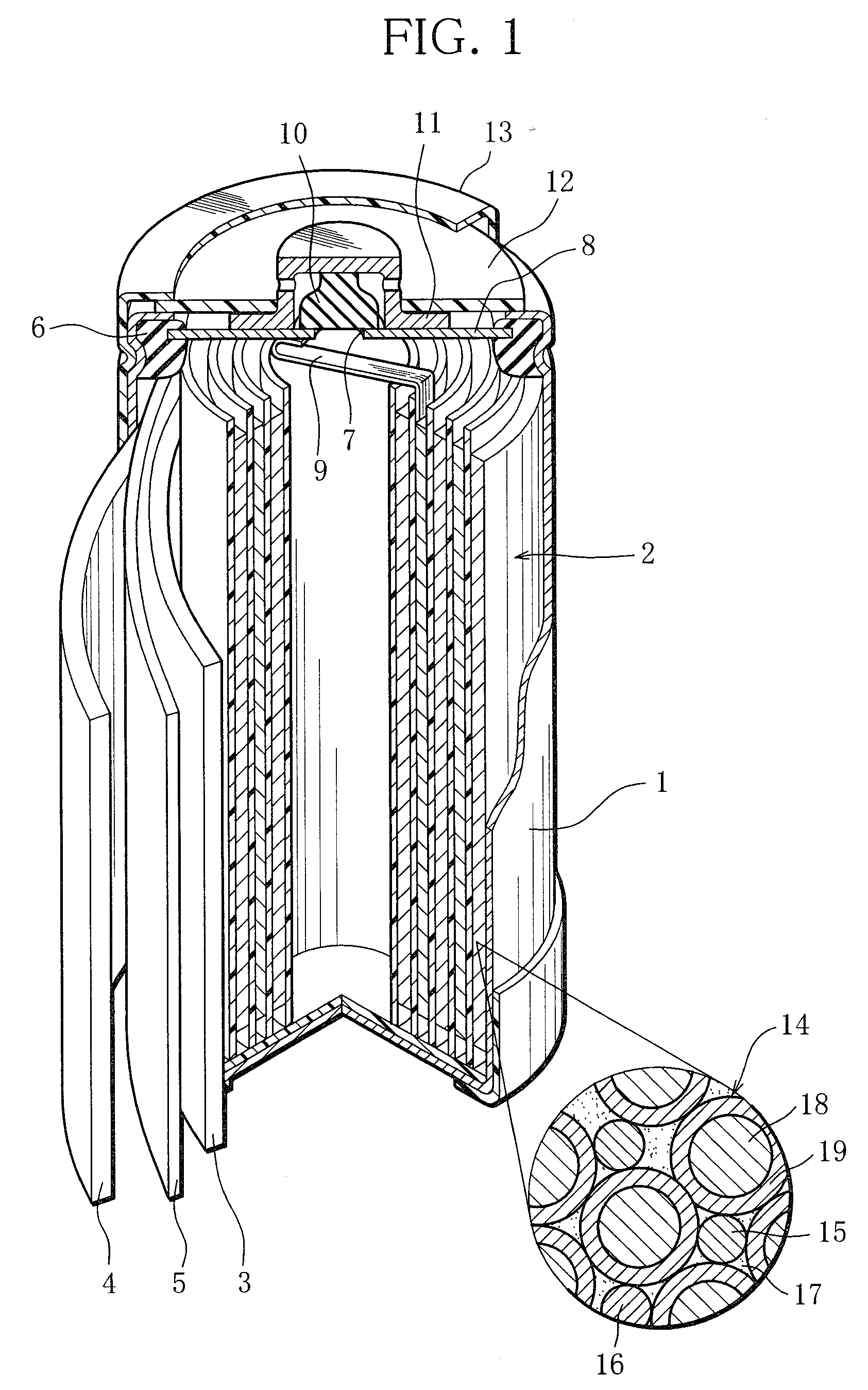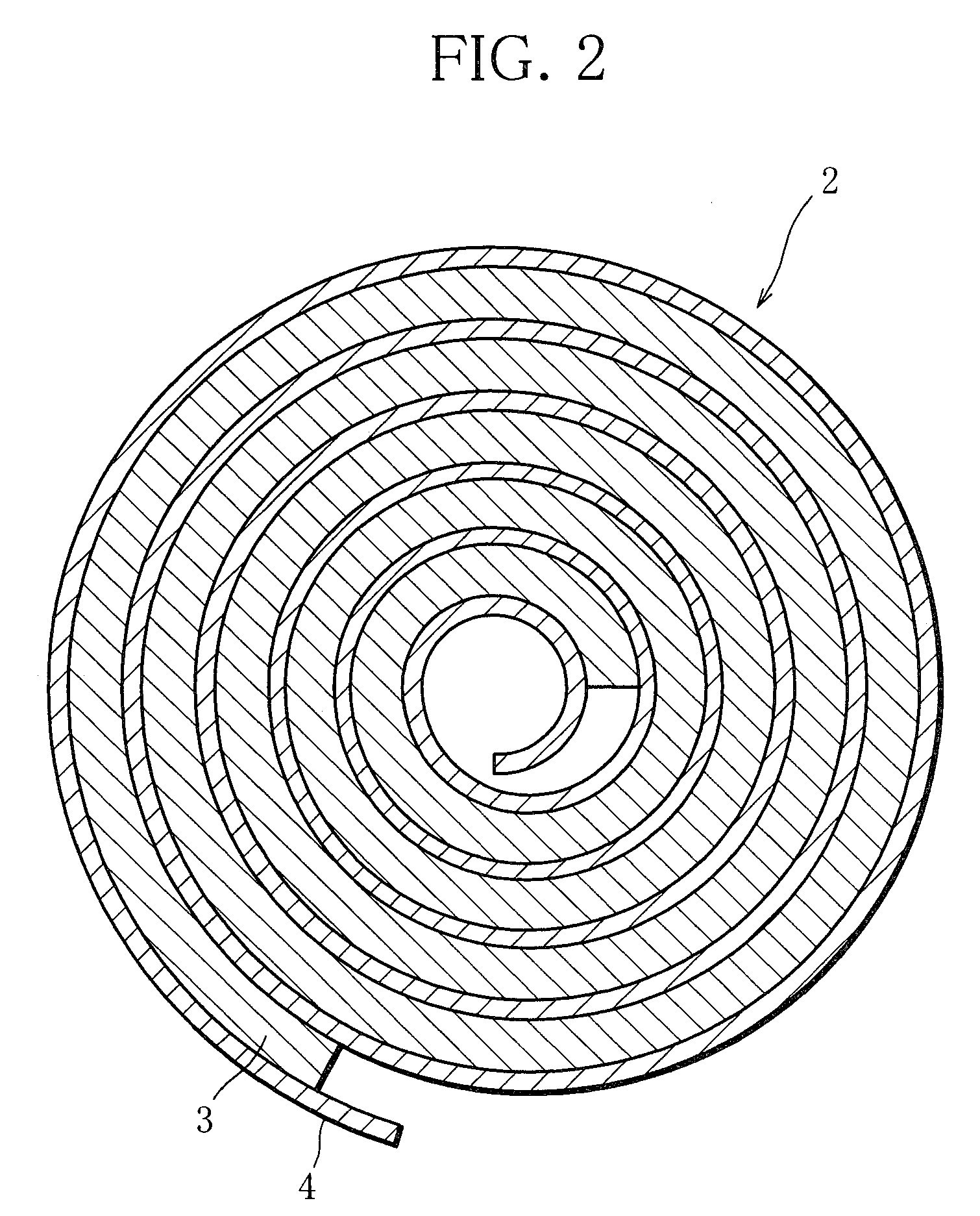Nickel-metal hydride rechargeable cell
- Summary
- Abstract
- Description
- Claims
- Application Information
AI Technical Summary
Benefits of technology
Problems solved by technology
Method used
Image
Examples
example 1
1. Preparation of Negative Electrode Plate
[0058]Metal materials were measured out to produce the composition La0.10Ce0.05Pr0.35Nd0.50 Mg0.10Ni3.70Al0.22 and mixed. The mixture was melted in a high-frequency melting furnace and formed into an ingot. The ingot was heated in an argon atmosphere of temperature 1000° C. for 10 hours, thereby causing the crystal structure in the ingot to change into a Ce2Ni7-type or similar structure. Then, the ingot was subjected to mechanical pulverization in an inert atmosphere and then sieving, so that rare earth-Mg—Ni-based hydrogen storage alloy particles of the above composition were obtained. The rare earth-Mg—Ni-based hydrogen storage alloy particles obtained had an average particle size 50 μm. Here, the average particle diameter was defined as a particle size corresponding to 50 percent in weight integration in the particle size distribution of the rare-earth-Mg—Ni-based hydrogen storage alloy particles that was measured with a laser diffraction...
PUM
| Property | Measurement | Unit |
|---|---|---|
| Percent by mass | aaaaa | aaaaa |
| Thickness | aaaaa | aaaaa |
| Length | aaaaa | aaaaa |
Abstract
Description
Claims
Application Information
 Login to View More
Login to View More - R&D
- Intellectual Property
- Life Sciences
- Materials
- Tech Scout
- Unparalleled Data Quality
- Higher Quality Content
- 60% Fewer Hallucinations
Browse by: Latest US Patents, China's latest patents, Technical Efficacy Thesaurus, Application Domain, Technology Topic, Popular Technical Reports.
© 2025 PatSnap. All rights reserved.Legal|Privacy policy|Modern Slavery Act Transparency Statement|Sitemap|About US| Contact US: help@patsnap.com



